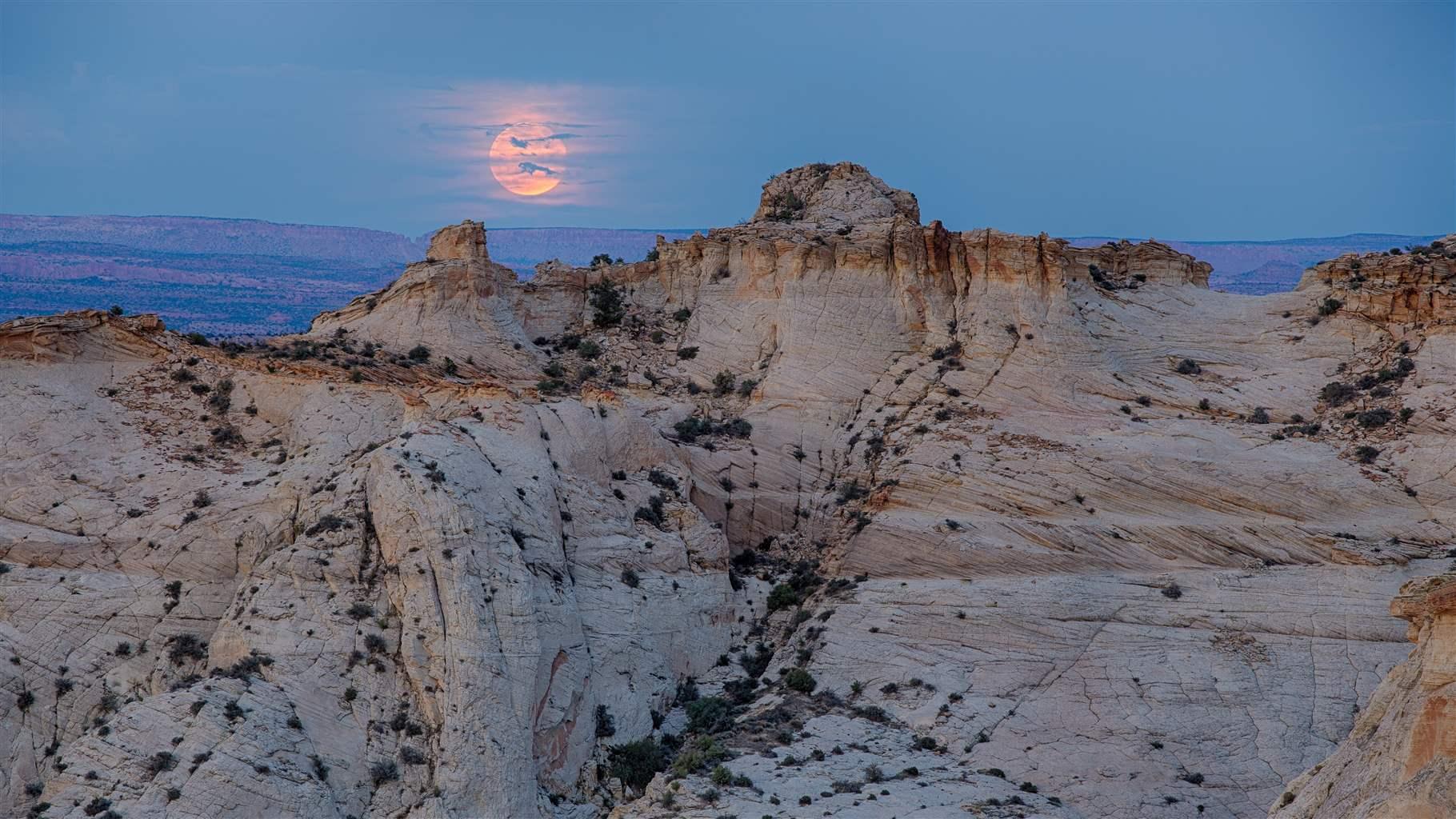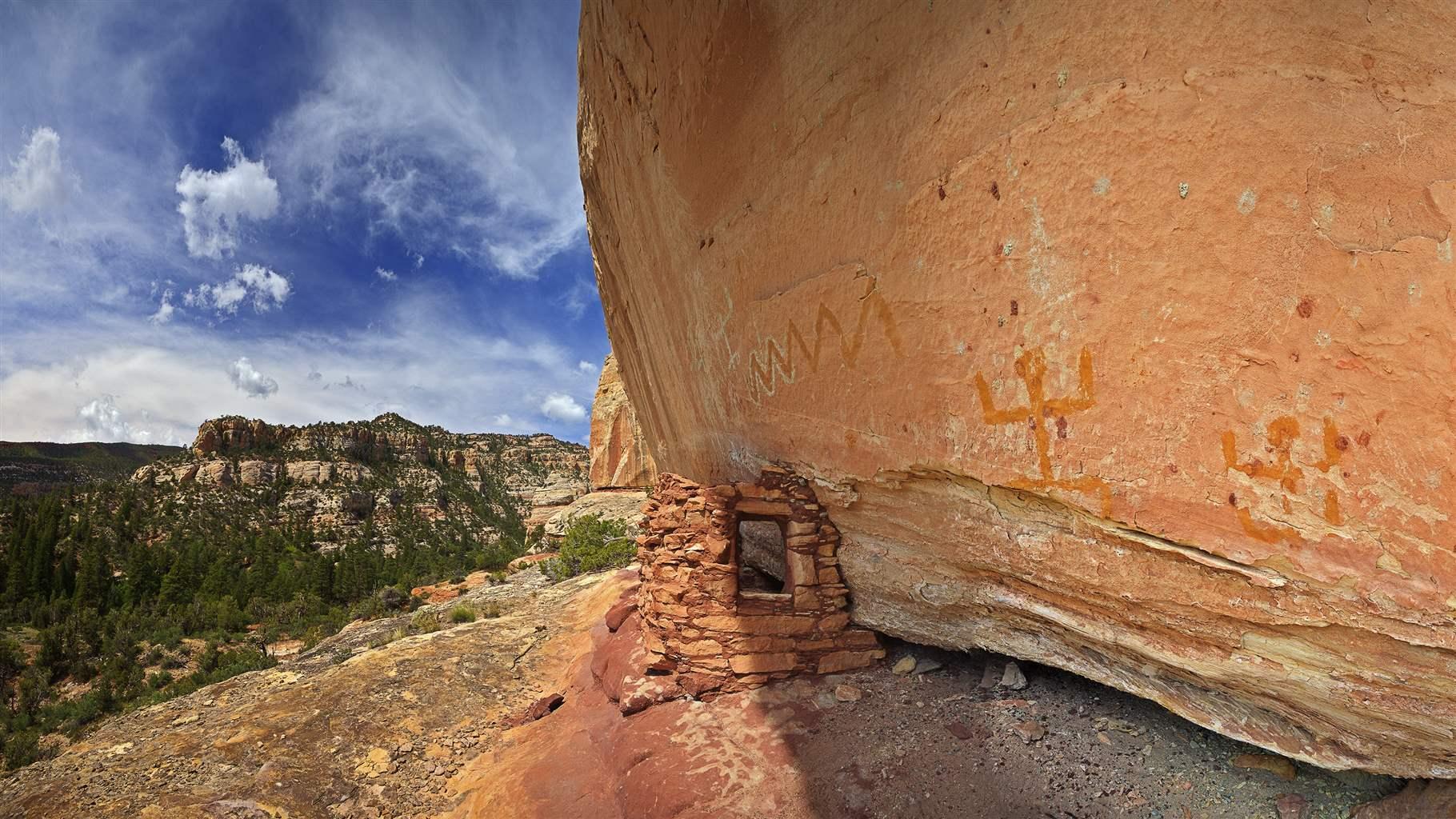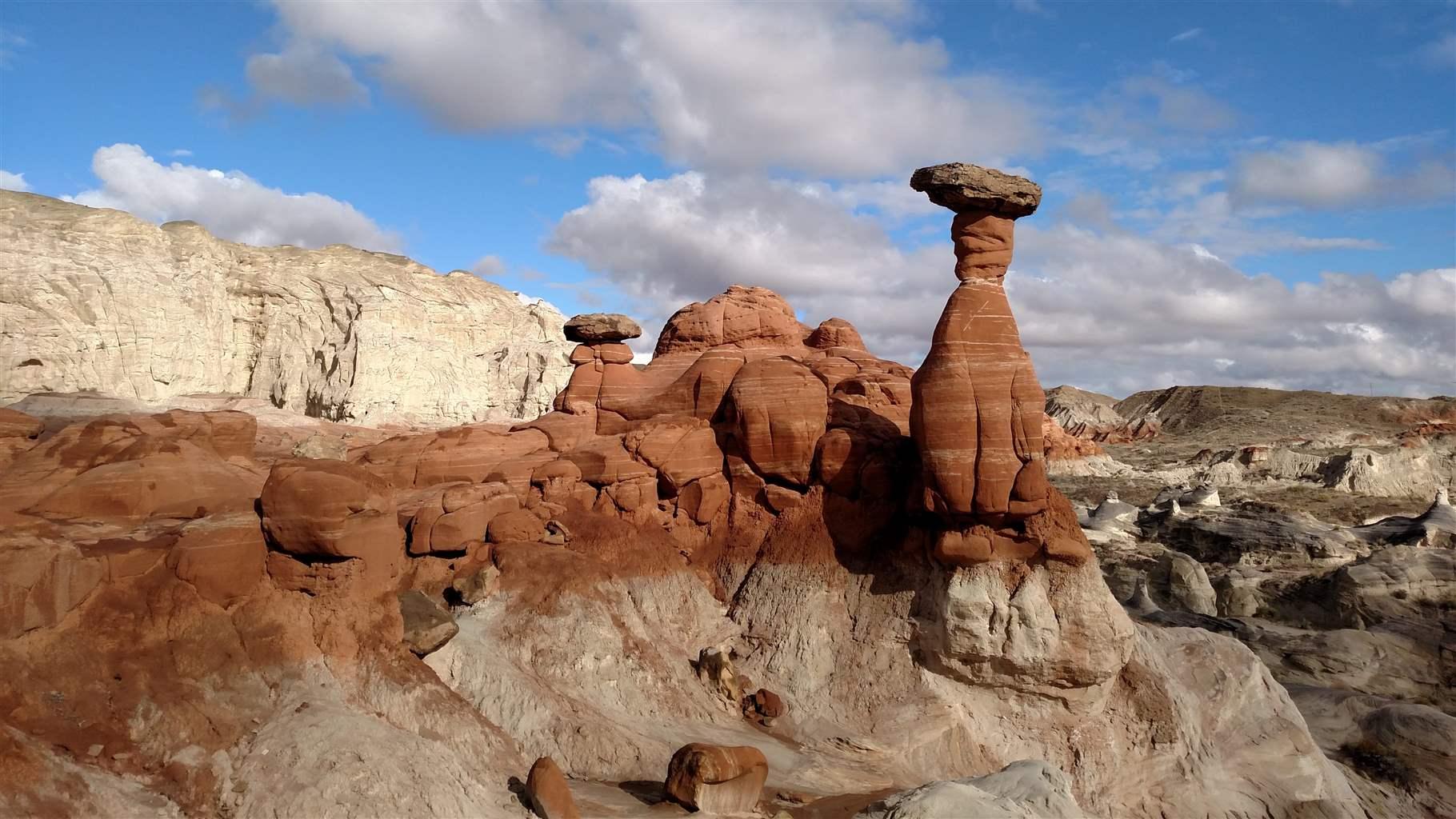Bears Ears and Grand Staircase-Escalante Need Protections Restored
Utah’s national monuments hold natural, cultural, and economic value

Southern Utah’s canyons, mountains, and plateaus are known for their scenery, fossils, and geologic wonders, but they have also been home to Indigenous peoples for thousands of years. In fact, more than 30 Indigenous tribes have ancestral and contemporary ties to the publicly managed lands of Grand Staircase-Escalante and Bears Ears national monuments, designated in 1996 and 2016, respectively. The Hopi Tribe, Navajo Nation, Ute Indian Tribe, Ute Mountain Ute Tribe, and Pueblo of Zuni, which comprise the Bears Ears Inter-Tribal Coalition, advocated for years for the U.S. government to protect the Bears Ears landscape—and to provide their nations with a meaningful voice in management of the area.
Current status of national monuments in Utah
Those requests were partially met when then-President Barack Obama created the Bears Ears monument in 2016. But—despite an outpouring of public support for protection—in 2017 President Donald Trump signed proclamations that reduced the size of Bears Ears by 85% and Grand Staircase-Escalante by 50%. Those orders also fragmented what remained of the monuments, diluting important cultural and ecological connections. And, in Bears Ears, the actions significantly curtailed the role of tribal leaders established in the original proclamation, which intended to ensure that management decisions across the landscape would incorporate Indigenous knowledge and expertise.
Now, there’s hope that full protection and those management roles could be restored. On his first day in office, President Joe Biden signed an executive order directing the Interior Department to work with other federal agencies and tribal governments to review the monument boundaries and conditions and determine if restoring them would be appropriate. The review period offered an opportunity for the Biden administration to meet with tribal leaders, Utah elected officials, nonprofit organizations, and others interested in the management of these landscapes. It also enabled the federal government to examine conditions in the areas that had been removed from the monuments.
Since the monuments were reduced, the Bears Ears Inter-Tribal Coalition, local nonprofit organizations, and other local advocates have identified increasing vandalism, off-road vehicle and foot traffic in sensitive areas, and other damage to cultural and natural resources within the monuments. Scientists, advocacy groups, and other experts determined that these issues arose because of insufficient educational information for visitors and the absence of land management plans that prioritize protection of these values.
Importance of landscape-scale protections
Bears Ears’ and Grand Staircase-Escalante’s original boundaries encompassed geologic and other scientific wonders and a diverse array of flora and fauna, including more than 600 native bee species and Utah’s most imperiled herd of desert bighorn sheep. Equally important, the original monuments included an estimated 100,000-plus cultural sites—such as ancient roads, petroglyphs, ceremonial sites, and cliff dwellings—that are considered sacred to the Indigenous communities.
Grand Staircase-Escalante is known as the “science monument” because of the extensive research opportunities it affords, including fossil sites that have led to the discovery of previously unknown dinosaurs. The Society of Vertebrate Paleontology has counted hundreds of paleontological sites adversely affected by the monument reductions in Grand Staircase-Escalante alone.
The Bears Ears region hosts one of the world’s richest troves of Triassic-period fossils. And an ethnographic study by the Inter-Tribal Coalition and the Indigenous nonprofit organization Utah Diné Bikéyah showed that an individual cannot go more than an eighth of a mile in Bears Ears without encountering “historic landmarks, historic and prehistoric structures, and other objects of historic and scientific interest.”
As tribal leaders said when Bears Ears was first designated, “Our ancestors lived, hunted, gathered, prayed, and built civilizations here, and [Bears Ears] remains vital today as a place of subsistence and spirituality. … The protection of the Bears Ears cultural landscape is powerful medicine for healing—of the land, of plants and animals, and for all people.”
Restoring protections could help regional economies
Monument designations provide a boost to nearby rural communities. A 2020 Resources for the Future study found that tourism and outdoor recreation in and around the 14 national monuments established in the West between 1991 and 2014 helped support and expand local economies, including around Grand Staircase-Escalante. Local businesses and the Escalante and Boulder Chamber of Commerce have cited Grand Staircase-Escalante as the central reason the area’s tourism industry grew and thrived following the monument’s designation, and business owners have expressed concerns about their communities’ futures should the monument rollbacks stand.
Bears Ears and Grand Staircase-Escalante are national treasures that merit full federal protection, including the substantive Indigenous management role for Bears Ears. The Pew Charitable Trusts looks forward to working with the Biden administration, tribes, local partners, elected officials, and others to safeguard these significant natural and cultural landscapes.
John Seebach is a senior manager and Jackie Feinberg is a principal associate with The Pew Charitable Trusts’ U.S. public lands and rivers conservation project.









